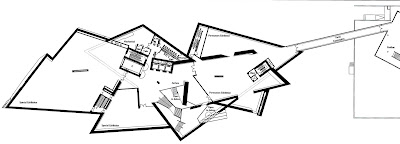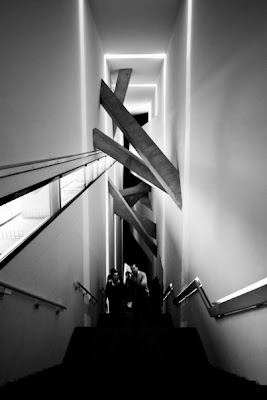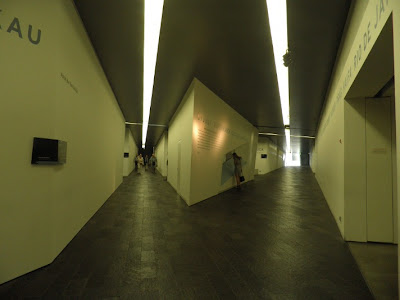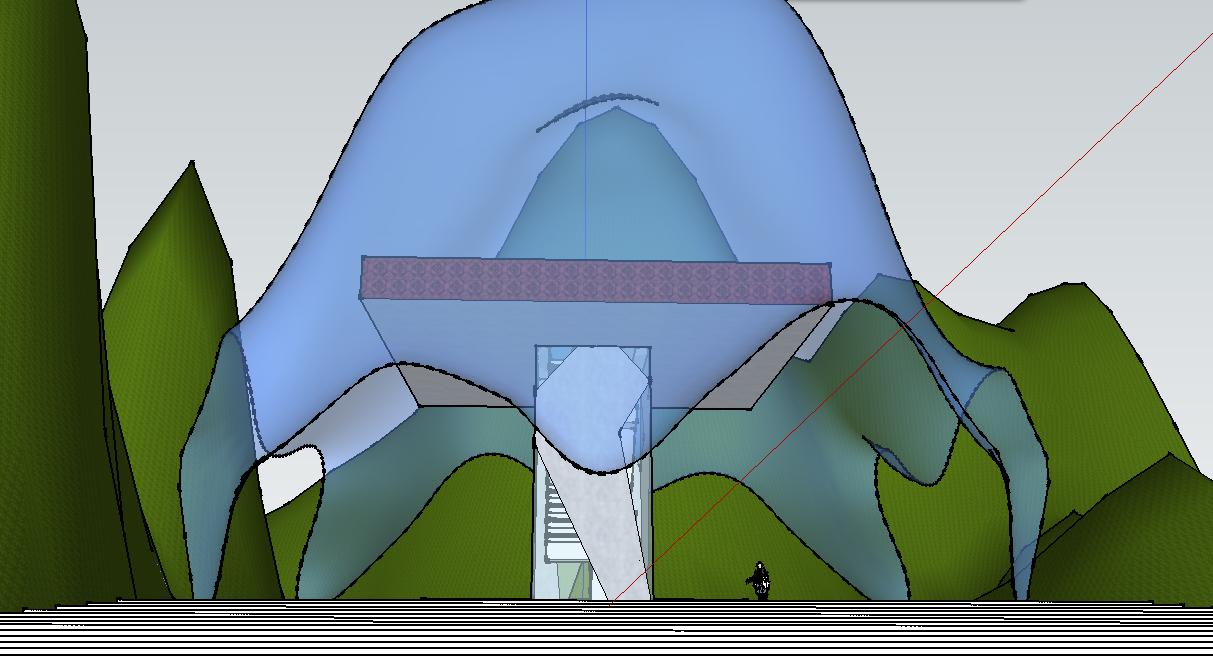Daniel Libeskind:
- A harsh collision of axes and linearity emerges into a network of disoriented movement through the internal space.
- The geometric and angular exist in contrast to the momochromatic and monolothic, this disorientation revealed by precis openings and skewed paths of light.
- Architectural originality and futurism can be achieved by breaking rectilinear and euclidean rules of geometry, creating a creative adventure between function and experience.
- A process of interlocking connects two different forms, yet the resulting spaces are unpredictable, and the experience can be chaotic.
- A bold composition that is absent of discernible sides can engage with the landscape and provide moments of viewing the architecture in different ways.
- An iconic and unprecedented architecture should be shared with the rest of the public realm, to act as a catalyst and converge sorrunding public spaces.
Hans Scharoun:
- A collision of textures and geometry results in a layered effect that create distinction between spatial foreground and background.
- Kinks in layers and the breaking of repetition breaks open the solid, and liberates the spaces.
- The interplay between curved and straight surfaces creates an unsettling experience of movement and chaos that tapers, accelerates, and decelerates.
- The play between mass and void harnesses a harmonious relationship between internal and external spaces.
- Individual, unique entities can be arranged to work harmoniously to contribute to a whole.
- Simplification of the exterior leads to an appreciation of the interior and the program structure.






.jpg)
















































